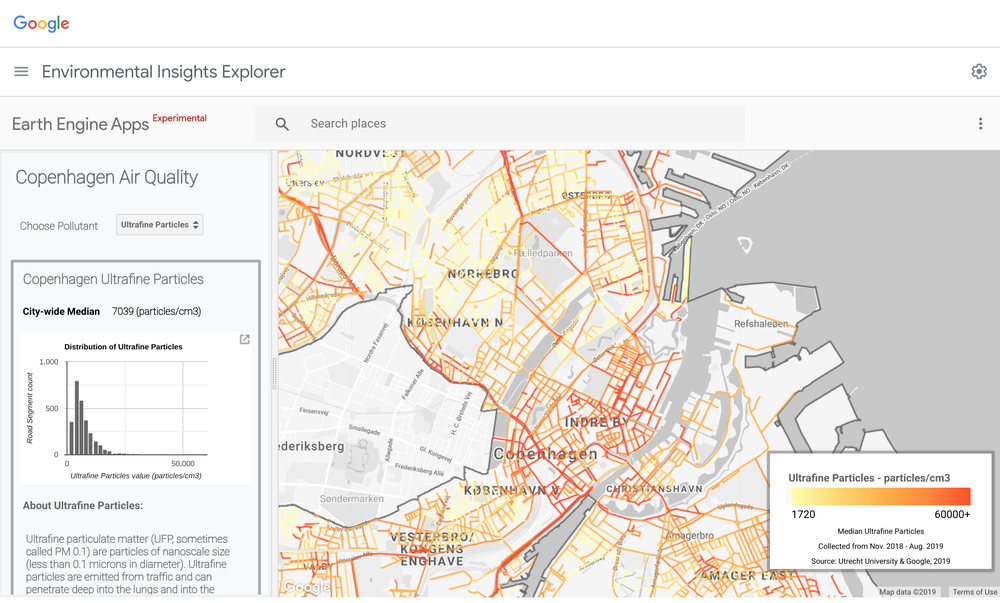

How polluted is the city? Google's new tool can help you profile
Google today launched a free online tool that provides city planners with information about a specific city’s carbon footprint.

Better urban planning requires access to information such as traffic and building emissions, air quality, and the daylight potential of homes. Now, Google says its new online tool will make these services available to some cities for free.
The tool, called Environmental Observation Explorer (EIE), will be launched in Europe today. Last year, the tool was tested in five pilot cities in the United States, Canada, Australia and Argentina.
The tool is now available in Dublin, Birmingham and Greater Manchester. As one of the company's sustainability initiatives, it allows users to browse selected cities and learn about their current carbon footprint.
While anyone can try it, the tool is primarily designed for city planners; the idea is that only after getting reliable information can they start taking effective action.
A quick search for Dublin, for example, will reveal that Google will estimate that building emissions and transport emissions account for 2.13 million tonnes and 1.31 million tonnes of annual CO2 emissions respectively; in addition, the city has rooftop solar potential that could save 206,000 tonnes of CO2 per year. emissions.
Google can even predict climate, temperature and precipitation forecasts 20 years into the future.
Rebecca Moore, director of Google Earth, said: “In Dublin, city leaders are already testing this tool and using insights from the EIE to inform smart transport projects, with the goal of reducing emissions and expanding the use of cleaner transport options. "
Using location data from Google Maps, EIE can identify the size of a building and whether it is a home or office, and aggregate it into a local grid to estimate its energy consumption. Similarly, it can look at traffic, travel patterns and distances traveled – and then, based on vehicle mix and fuel type, build traffic emissions data.
It can even analyze satellite imagery to determine which rooftops are suitable for solar power. A note on the webpage mentions that it is working to assess whether it can provide useful data to the waste sector.
Jamie Cudden, Dublin City Council's smart cities lead, told ZDNet: "Providing a more dynamic data flow is key to influencing climate discussions and policy."
"This release is setting the benchmark, but it will be more interesting when we can start comparing data year-over-year."
Google also announced that it will provide local air quality data starting in Copenhagen. This is part of its ongoing AirWatch project, which equips Google Street View vehicles with scientific instruments to measure air quality at street level.
The Aerial View project started last year in partnership with the city of Copenhagen and is now making the data available to the public, whereas initially it was only shared with scientists and the city council.
Until then, Copenhagen had only three fixed monitoring stations monitoring air quality, which are still in use today, in part to verify that the data collected by Google is consistent.
Rasmus Reeh, senior consultant at Copenhagen Solutions Lab, told ZDNet: “Having a mobile monitoring station means we can now get data from every street and every corner of the city. We can identify hotspots that we couldn’t see before, and we can Measuring ultrafine particles and black carbon.”
With this detailed classification of urban air quality, he said, it would be easier to identify and control sources of pollution and to protect citizens in at-risk areas that had not previously been tracked.
EIE Labs, Google's way of naming its new climate data set, is part of the company's plan to push sustainability and stay ahead of the curve at a time when tech companies compete for top environmental honors.
Microsoft announced a renewable energy consumption target of 60% for its data centers by 2020, while Apple said it is currently using 100% of renewable energy globally. HP has pledged to ensure every printed page is carbon neutral, and Dell has exceeded its goal of using 50 million pounds of recycled materials in its products by 2020.
"It's a hot topic," Carden said. "All multinational companies have social responsibility programs, so this is a good shift for Google."

Author: Daphne Leprince-Ringuet
This article is from a translation, if you want to reprint, please obtain authorization from this site first.
